But if edible insects are to hit the mainstream, the infrastructure to support their industrial scale production needs some work, says Daniel Imrie-Situnayake, co-founder of Tiny Farms, a California-based company on a mission to turn bugs from a novelty to a mass market food ingredient.
At current prices – anything from $25 to $45 for a pound - cricket flour (100% ground cricket) is not a viable option for a big food company, acknowledges Tiny Farms, which is dedicated to researching feed formulation, habitat engineering, farm automation and management software to drive scale and lower costs in insect production.
“Right now cricket flour is still something of a novelty,” Imrie-Situnayake told FoodNavigator-USA. “But we’re about to move into the next stage when insects become readily available as a food ingredient and we’ll see far more diversity in terms of products.
“According to Lux Research, ‘alternative proteins’ [such as insects, soy, algae, pea, rice and canola], will account for up to a third of the protein market by 2054, and insects will play a key part in that.”
The production technology is still pretty rudimentary
While it might seem gimmicky, cricket flour ticks all the right boxes when it comes to nutrition and sustainability. It’s low in fat but high in protein (60-70%), packed with calcium, iron, and vitamin B12, and greener than many rival protein sources, as crickets are super-efficient at converting feed into food, require less land and water than cattle or pigs, and emit fewer greenhouse gases (according to a 2013 report from the Food and Agriculture Organization of the UN).

Indeed, despite the ‘ick’ factor, large food and beverage companies – as well as hipster start-ups in Brooklyn and San Francisco – have already started playing around with samples, and if prices come down, it will start to look far more appealing, said Imrie-Situnayake.
“If you want to use cricket flour to make food products today, you’ll be able to find a supplier, but the production technology is still pretty rudimentary, and very labor intensive, so prices are high and volumes are low. It’s small batch, small-scale and artisanal.”
Once the process is continuous rather than small batch production, that will make a big difference
As for the flour itself, you should get a reasonably consistent product if you use the same supplier, he said.
But order three bags from three different suppliers and there will be slight variations in taste, texture and nutritional profile, which reflect everything from what the crickets were fed to the temperature used in the drying/dehydrating process after they are frozen and how finely they are milled, he added.
“There’s an established set of cricket farms that rear live crickets for feeding to exotic pets, but turning crickets into a food ingredient is very new.
“Part of what we’re trying to do is enable the commoditization of insect production to take away some of that variation and drive productivity. For example, once the production process is continuous rather than small batch, that will make a big difference. At the moment, far too much time is spent doing repetitive tasks that could be automated.”
Optimizing the process
So Imrie-Situnayake - who started Tiny Farms in 2012 with web-designer friends Andrew and Jena Brentano - is looking at every aspect of the process from what insects are fed (currently it’s chicken feed, but that may not be ideal), to how they are raised, killed, heat-treated/dehydrated, ground up, packaged and transported, in order to identify the optimal process.
Generally, crickets are raised for 6-8 weeks and then frozen. Next they are heated/dehydrated to remove the moisture and kill microbes before they are milled into flour. But the optimum times and order of these steps is still being determined.
For example, some suppliers grind the frozen insects before heat treating them, which they claim is more efficient than drying the whole insects prior to milling, as it requires less heat (insect bodies withstand heat and conserve moisture) and preserves more nutrients.
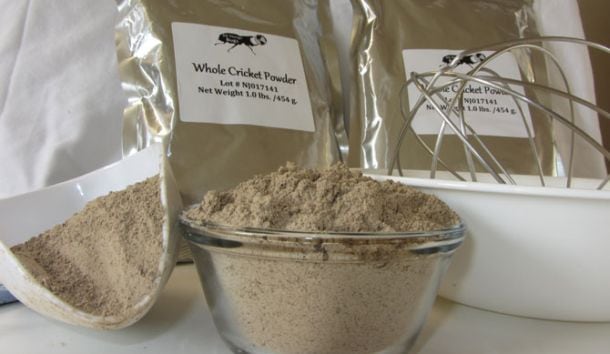
We’re now fundraising to build our own industrial scale cricket facility in Oakland
Until recently, Tiny Farms has worked on a consultancy basis, designing and building farms for other companies. Today, however, it is “in the middle of a transition”, said Imrie-Situnayake.
“We’re now fundraising to build our own industrial scale cricket facility in Oakland that will serve as a test bed for improving and optimizing our technology so it’s ready for other people to use. So we want to partner with farmers and give them the technology and training they need to produce crickets and we’ll buy their crickets and supply food companies with flour on a wholesale basis.
“But our real goal is to lower the barrier to entry for farmers so it’s as straightforward or more straightforward to be a cricket farmer than it is to be a poultry farmer," said Imrie-Situnayake, who said that in future farmers - or anyone else with some spare land/buildings that's looking for an additional revenue stream - could work with Tiny Farms to get everything they need to start producing crickets efficiently.
He added: “Insects are a huge untapped biological resource for food, but also for other applications such as cosmetics and pharmaceuticals.”
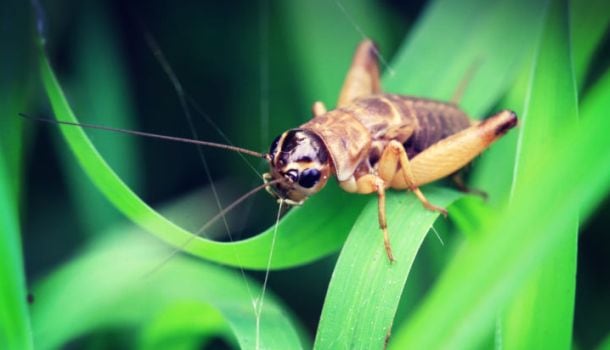
What we’re doing is borrowing strategies form the technology industry
So are there useful lessons to be gained from other countries such as Thailand, which has a thriving insect farming sector?
Yes and no, he said. The Thai market shows that people will happily eat large quantities of crickets, “But the industry still depends on cheap labor and has yet to modernize.”
At Tiny Farms, added Imrie-Situnayake, who specializes in automatic identification data capture (technologies used to monitor and collect data around industrial processes), “What we’re doing is borrowing strategies from the technology industry where rapid improvements are built into the way people work – using data to optimize everything they do.
“So we’re saying how can we collect as much data as possible about every aspect of the functioning of the farm, and learn from that to improve yields and protein content and quality?
“We’re also looking at things that could be great for crickets to eat from agricultural side stream products that are available very cheaply and currently don’t have much application.”
Early adopters
So what’s happening further down the supply chain right now?
Cricket flour suppliers are popping up all over the place, but the best known include Cricket Flours in Oregon, Next Millennium Farms in Ontario, Big Cricket Farms in Ohio, Aspire Food Group (which has just merged with World Ento) in Texas, and All Things Bugs in Georgia.
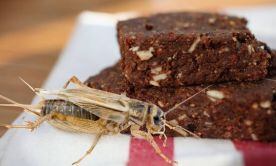
As for food companies using cricket flour, two of the best known players – who both exhibited at the 2015 Natural Products Expo West show – are Brooklyn-based EXO and Salt Lake City-based Chapul, which make bars. (Chapul went to market first, and is in 500+ stores while EXO is in just over 100, but most of their business is done online.)
Other players using edible insects include San Francisco-based Bitty, which makes cookies and sells cricket flour, and Cambridge, Mass.-based Six Foods, which makes snacks from beans, rice and cricket flour called Chirps.
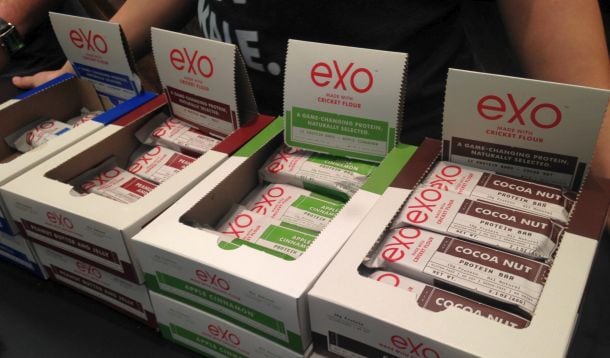
Millennials like to try new things, especially in snacks
So what’s their go-to-market strategy?
Speaking at the IFT show last year, Chapul founder Pat Crowley said he was initially going after the 'foodie' crowd and 'novelty buyers’, although he would ultimately seek a broader audience.
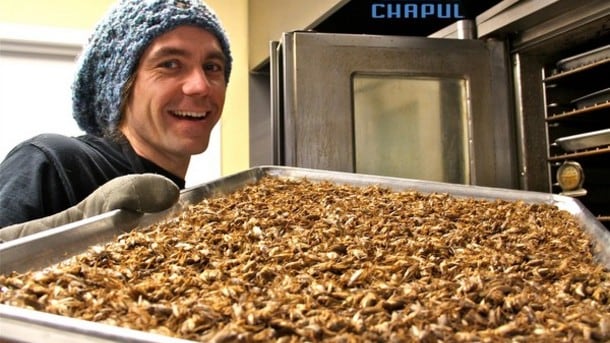
"Journalists always ask me what do you say to people that can't get over the psychological hurdle of eating insects?" said Crowley. "I say, 'nothing' - we're not targeting these people. We're targeting people that are receptive to our message, that will be our early adopters."
Cricket flour absorbs the flavors of other things you use in a recipe
Speaking to us at Expo West this year, Chapul and 'cricket jedi' Callan Chythlook-Sisof said: "Cricket flour has a distinct flavor, but it also absorbs the flavors of other things you use in a recipe, so it's pretty versatile. We're still a fairly small company but we're really pleased with our same store sales rates - people are making repeat purchases and new consumers are trying them.”
As for the ‘ick’ factor, it’s not a huge barrier, she added: “People like to try new things and new flavors, especially in snacks, they're just much more open to it than they used to be."
Tiny Farms is working closely with the Institute of Food Technologists’ (IFT’s) FutureFood 2050 initiative.
